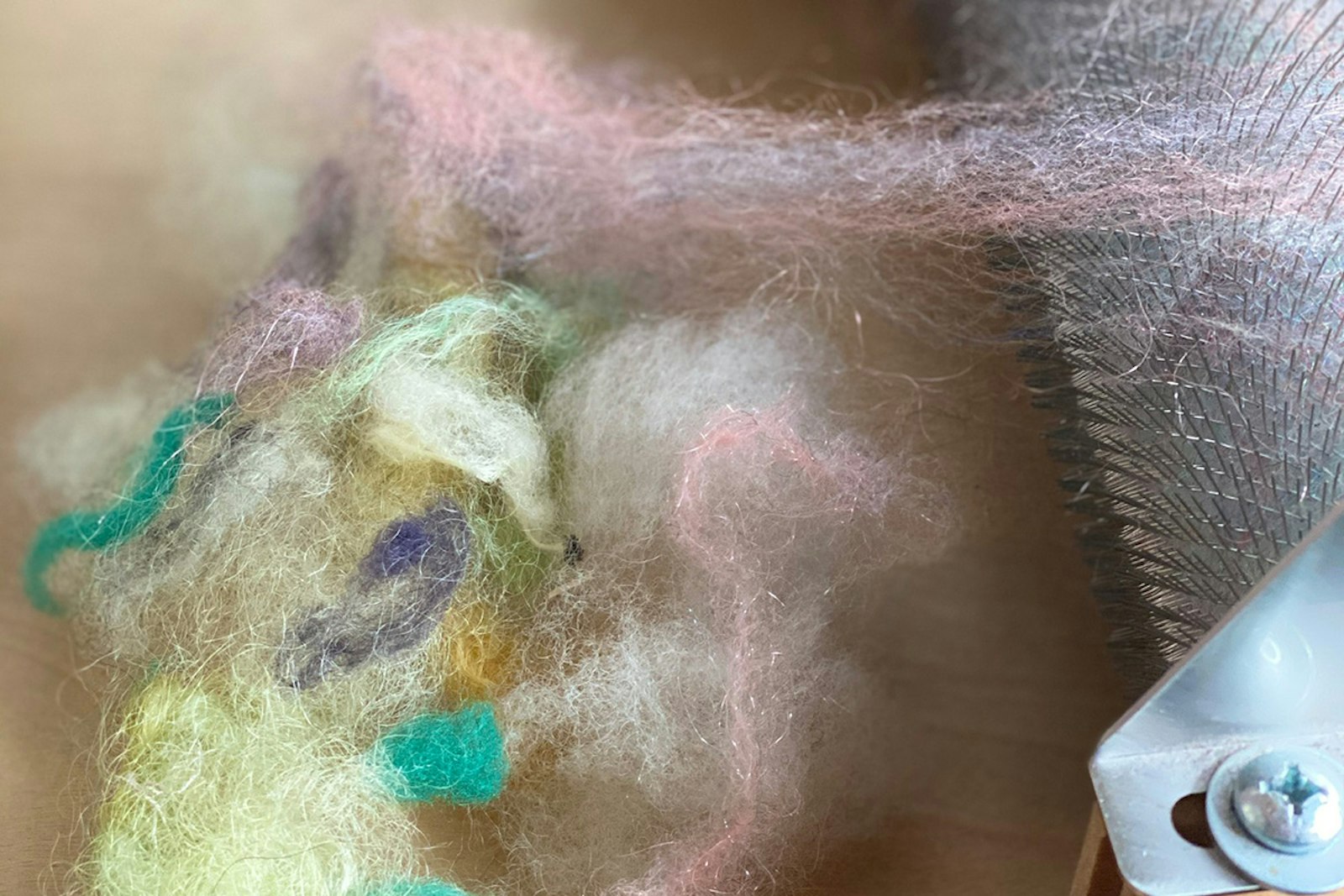As handspinners, we are often told to remove or discard waste. Most of the time, this suggestion leaves the handspinner wondering what should be done with bits of waste or whether it is even fair to use the term “waste” to describe the fiber that gets left behind.
It is good idea to look at these fibers with a different perspective. With a little bit of creativity, the leftover fiber that comes off of a drumcarder, wool combs, and other fiber tools can still be useful. In many cases, the tiny, fibery bits from processing sessions are typically short (less than 2 inches), and these fibers can be used alone or combined with dormant stash fibers for an interesting textural spin. And although I highly recommend re-combing waste fibers that contain vegetation, for safety reasons, I avoid using fibers that have burrs or other prickly foreign objects affixed to them.
Here is my tool-free approach to revamping your fibers, and also, your spin.
Gather and Shop
After I gather at least half an ounce of waste fibers, I organize them by color and theme and place the bits in glass jars. Then, I shop my dormant stash—indie-dyed top, roving, small samples of locks and batts—for coordinating colors or complementary textures.
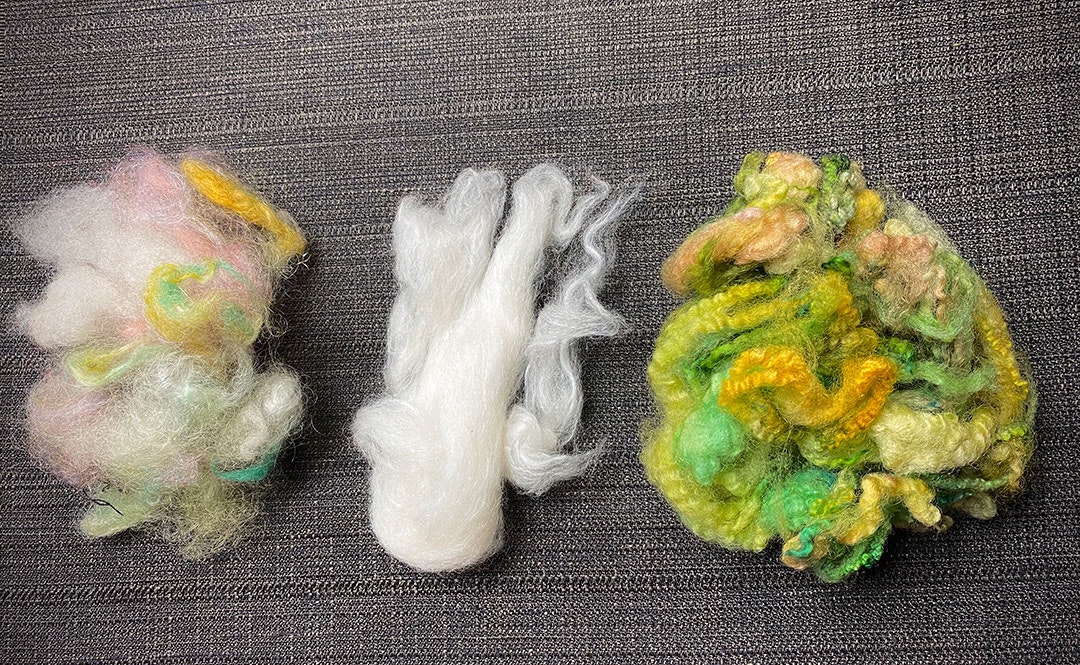
Waste fiber and dormant fibers waiting patiently to become a blend.
Combine and Tease
Next, I create a textured cloud of fiber by overlapping and teasing fibers with my fingers and pulling them open. I repeat the overlapping and teasing process until the fibers are fluffed, open, and visually pleasing. The fibers do not need to be parallel. Because too much texture or too many lumpy areas can make the cloud-like fiber blend harder to draft, when in doubt, I tease some more.
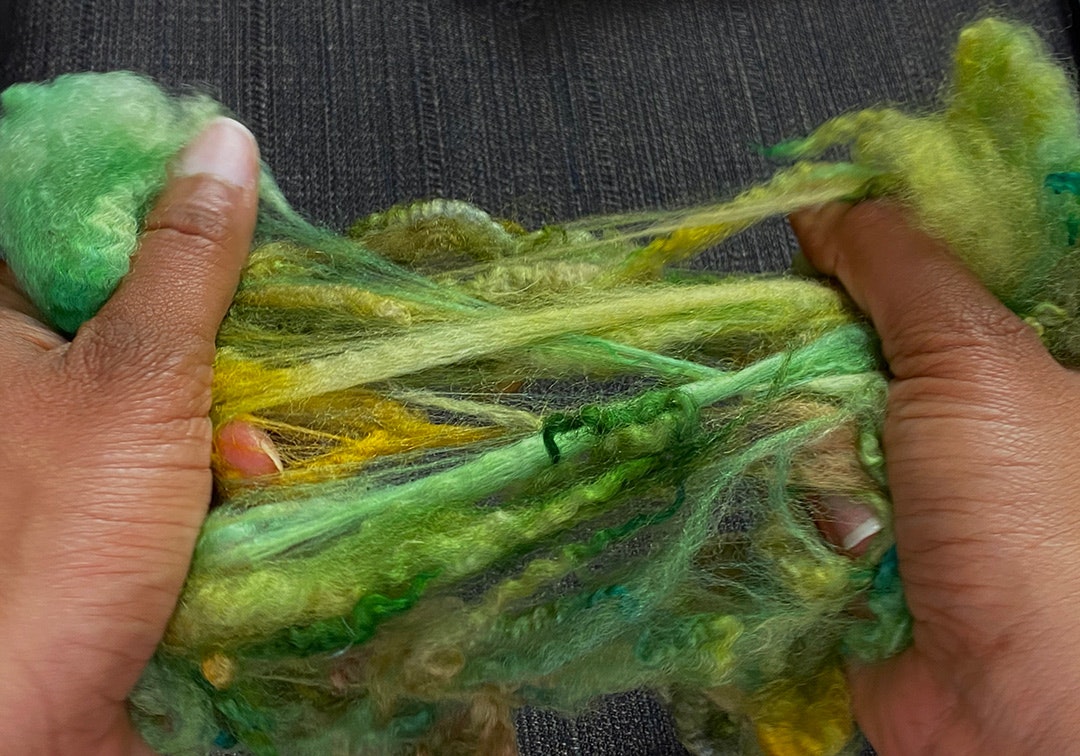
Pulling locks apart by hand.
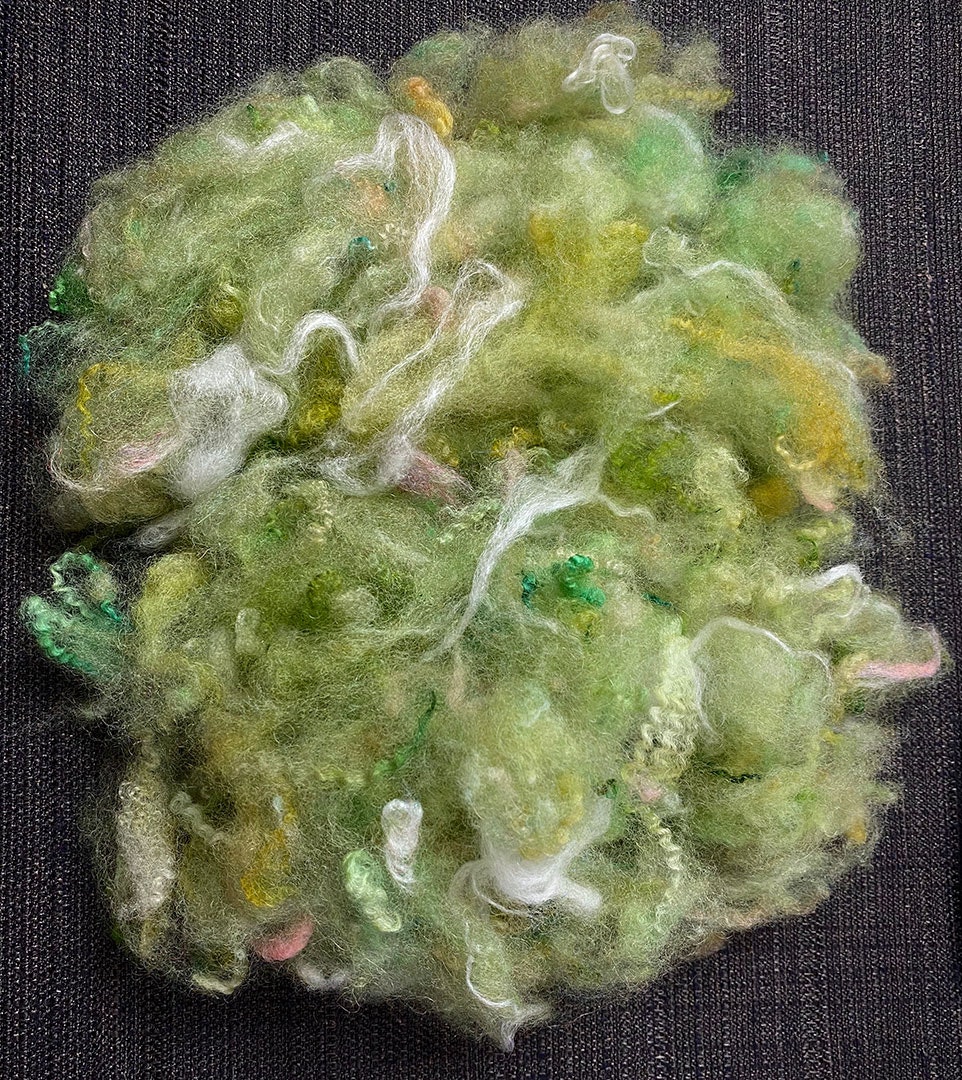
Blended cloud-like fibers. These are almost ready for spinning.
Let Go and Spin
Now, it is time to take the fiber cloud to the spinning wheel. I pinch off a manageable amount of the fiber blend and start spinning. I let go and use a large whorl, or pulley, to get a feel for how the blend spins, then I make adjustments as needed.
When you use this approach, it may be a challenge to spin if you are used to controlling every inch of fiber, but it can be very relaxing once you get the hang of it. Simply let the fibers go toward the orifice as they appear and resist the urge to make a consistent yarn. My personal spinning preference for spinning these textured yarns consists of using a modified short-backward drafting method without smoothing the fibers down. It makes for a comfortable drafting experience and keeps the yarn nice and airy. Feel free to experiment with various drafting methods for your own handmade fiber blend.
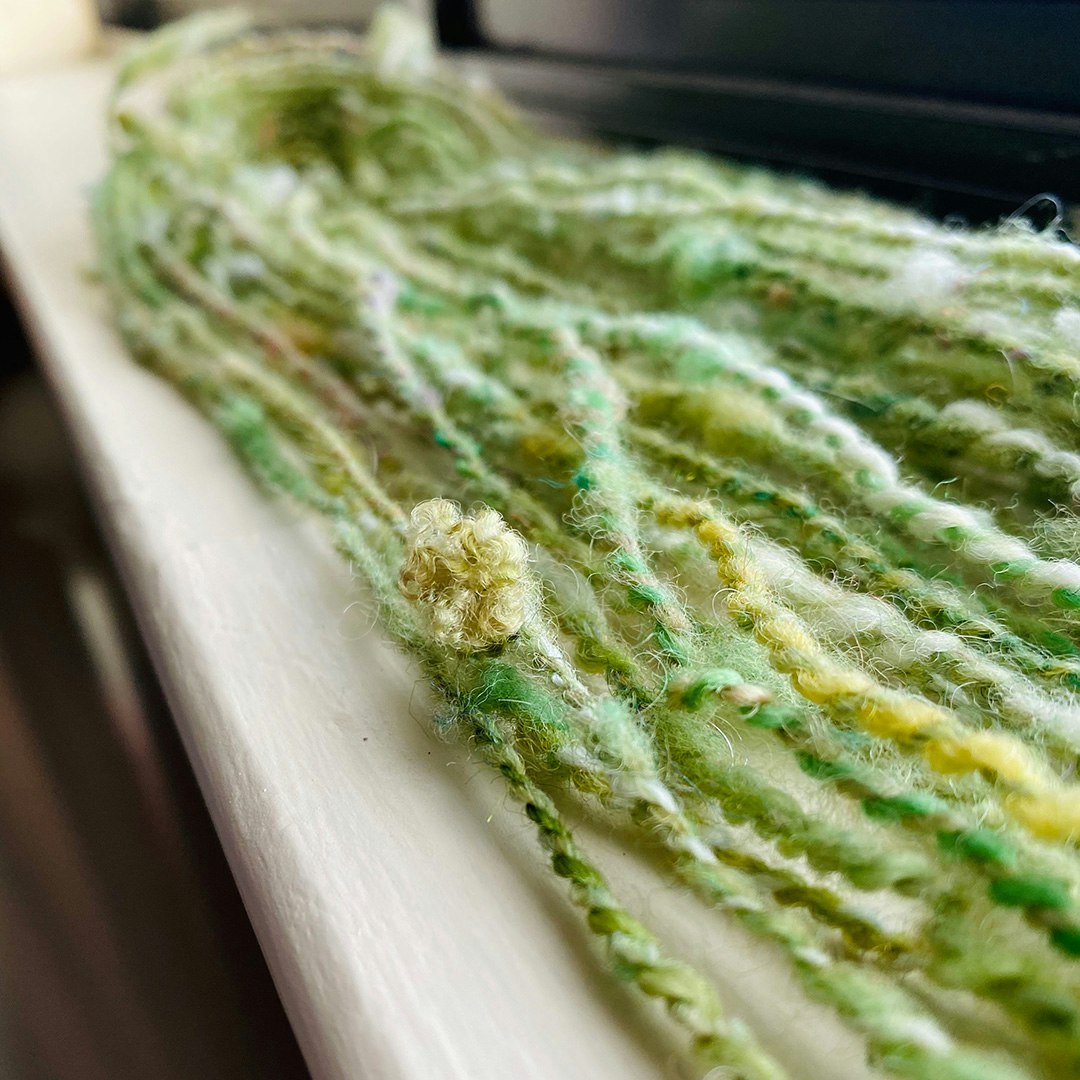
Finished textured yarn ready to be used.
Turning fiber waste into textured yarns is a great way to create beautiful yarns to be treasured.
Heavenly Bresser is the owner of Heavenly Knitchet. She is an award-winning handspinner and teacher at major fiber events all over the United States. Aside from spinning and teaching, she can be found dyeing fibers and making jewelry. Her goal is to inspire, encourage, and uplift other fiber artists. Visit her online at www.heavenlyknitchet.com.

